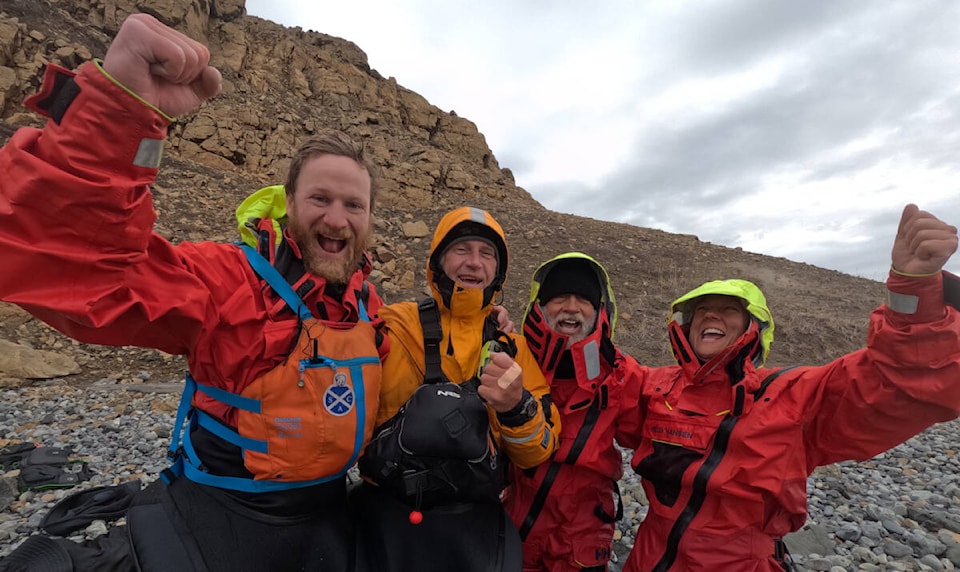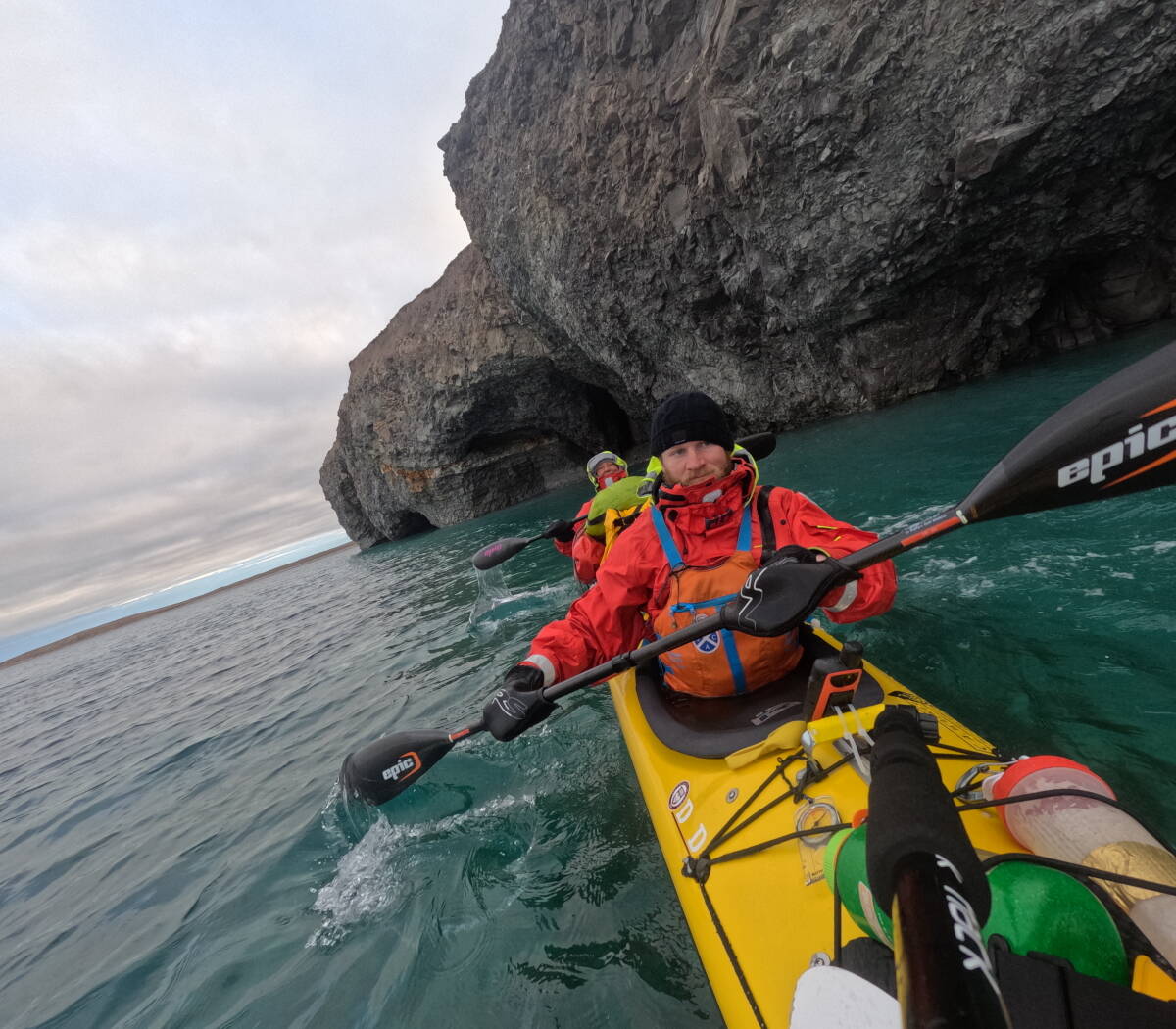
For the first-known time, someone’s kayaked the Northwest Passage.
West Hansen, Jeff Wueste, Mark Agnew and Eileen Visser — aka the Arctic Cowboys — have become the first people in modern history to navigate Northwest Passage in a single summer on human power alone. They achieved the milestone on Oct. 8 at 3:12 p.m.
“Mother Nature played a big role in letting us do it,” said Agnew. “It’s not all about determination. It’s also about being on time and being very lucky.”
Agnew, who was a late addition to the four-person team, said the 83-day journey was quite the way to learn how to kayak. The 31-year-old had been training with a separate group that was planning to row their way across the Arctic Ocean, but decided that kayaking was more his thing.
After signing up with the cowboys, Agnew realized he needed to get some practice in for long-term kayaking, so he purposefully did back-to-back 28 mile treks to get an idea what he was in for.
He also spent four days with an adventure-kayak instructor, who threw him in the Atlantic Ocean and spent the entire time training him to deal with high waves, which may very well have saved his life.
Regardless, Agnew said he became more aware of just how deep into the fire he had thrown himself as he paddled on.
“The more experience I gained, the more aware I became of my inexperience,” he said. “I think they call that the Dunning-Kruger effect.
“As we got to the end, I was beginning to think this is insane that I have done this as basically this is a crash course.”
Even when the team finally reached the coast, they were still several hundred kilometres away from Tuktoyaktuk. Expedition lead Hansen said the team only finally was able to return to civilization late Oct. 11 when they were able to coordinate with a bush plane to get flown in.
He said he’s pretty much spent the rest of time eating.
“Being the expedition leader, I didn’t feel like I could relax yet,” said Hansen. “There were some heavy snowstorms in-between us and Nicolas islands, so it took us a few days to get there and we weren’t picked up till yesterday, so my celebration is right now — literally.
“You’ve got to earn your salami, cheese, cigar and Jack Daniels.”
Ice, bears and narwhals
Starting July 18, just as winter began to ease away in the far North, the team was witness to the incredible power of nature along the way.
Hansen noted that going westward was part of the overall strategy, since it also meant moving southward. This would give the team more time since winter comes earlier the closer to the pole you are. However, even still the snow began falling long before they were finished their journey.
But even in the relatively warm summer, the hazards of the Arctic ocean were many.
“We got caught in several dangerous situations with the ice floes,” said Hansen. “So we’d have to get up on the ice sheets and wait them out, then pull over and hop from one to the other dragging our boats until we got to open water and then race away.”
Taking advantage of the 24-hour daylight, the crew would kayak for up to 16-hours in a stretch. They needed to, with the aforementioned ice frequently disrupting time on the water.
From day one, the crew was spotting bears — and bears were spotting them. Particularly unnerving for Agnew was the aquatic nature of polar bears. When the team made noise to scare a bear off, it would dive into the water they were kayaking through.
Of course, they had taken precautions, including bear alarms, sprays and firearms for worst-case-scenarios. But even still one night they had a rude awakening after Agnew awoke to a brushing sound on the side of their tent.
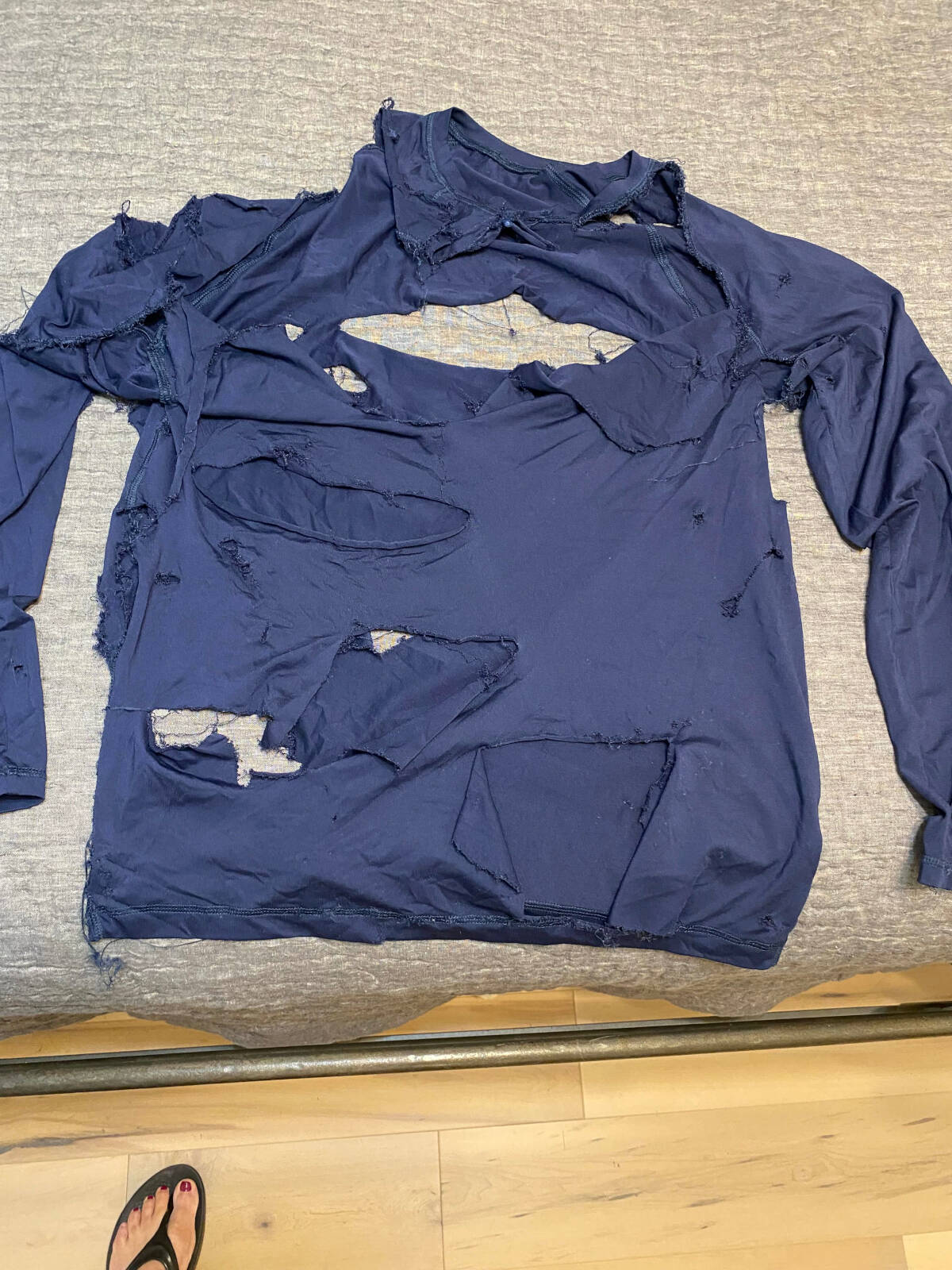
”The others didn’t believe me,” said Agnew. “I said ‘I think it’s a bear’ and then we heard this primal guttural growling and everyone sat up.
“I sprinted outside the tent to fire the flare gun and it didn’t move. I’m just in my pyjamas, barefoot and freezing. It was just standing there looking at us, we’re making sounds and screaming at it, but it just wouldn’t move. This went on for so long. Eventually we ran out of energy and we’re just standing staring, staring at each other.”
However, after what felt like hours, the bear wandered off, never to be seen again.
But not before ripping one of Hansen’s shirts apart.
Dangerous ice and waves
Far more of a hazard for the kayakers was the Northwest Passage itself.
You might not know it by watching him travel through some of the most dangerous waterways on the planet, but Hansen says he’s actually a careful and safety conscious person.
“You’re out there,” he said. “If you hit the emergency button for the Coast Guard to get you — which we wore constantly — they may not be there today.
“You know you’re on your own.”
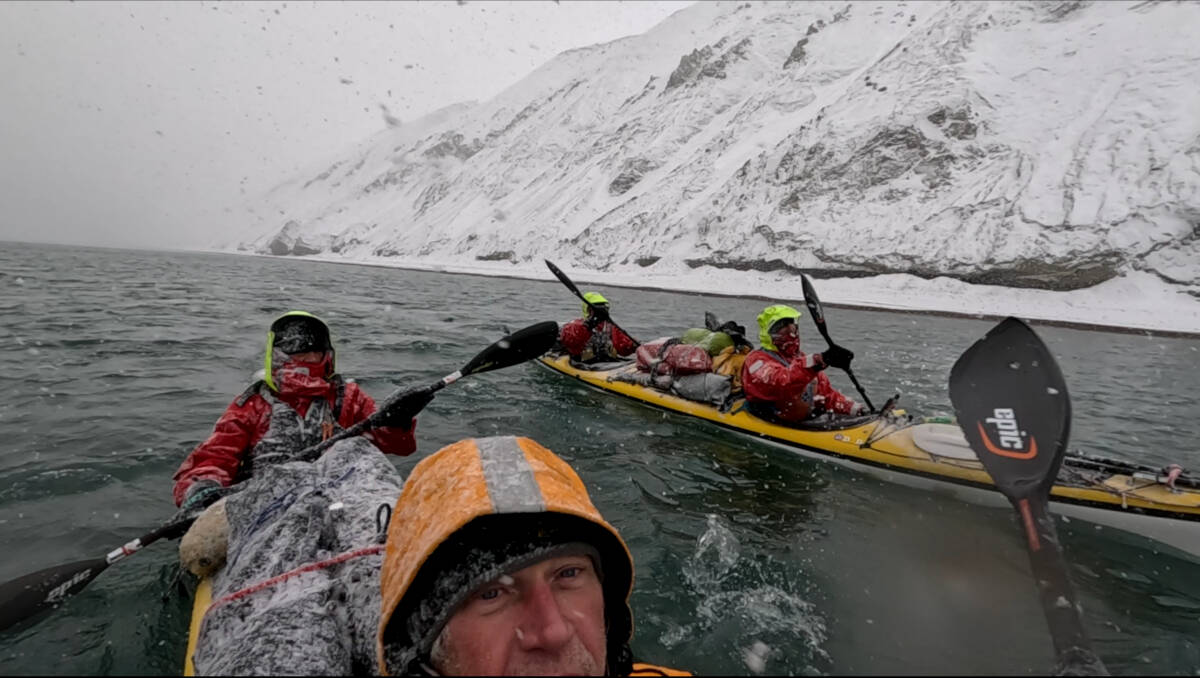
For every day the team spent on the water paddling like there was no tomorrow, they probably spent two to three waiting for weather conditions to allow for it.
Shortly after setting off, Hansen noted the team found themselves navigating ice floes when two suddenly began moving together, threatening to crush the small kayak and the team inside it.
”It was clear when we first headed south to the Somerset Island region,” he said. “But once we were there storms from the North blew sea ice from Lancaster Strait down into Prince Region Inlet, from the Resolute area.
“All of a sudden this ice-free area now had ice in it and it was moving fast. The ice was going everywhere. That was a really dangerous situation, we had to get to shore where we could sit and wait it out.
“Both boats almost got crushed at one time. Luckily they got pushed up by two ice sheets coming together and not crushed. That was very hairy situation.”
After catching their breath, the team portaged their kayaks over the ice to safety.
This was still in the summertime. Hansen said the team saw its first snow when they hit Cambridge Bay and it was winter ever since.
Another close shave befell the team shortly before they completed the passage. On their final channel crossing across Franklin Bay, the four were beset by 25-foot high waves — big enough to overturn the tiny kayaks.
It was here when Agnew’s four days of training in Britain came back to save him.
”I did a lot of training with this expert expedition guy in the UK,” said Agnew. “He just put me in breaking waves for four days straight. I thought ‘This is irrelevant, but he’s the guy who knows.’
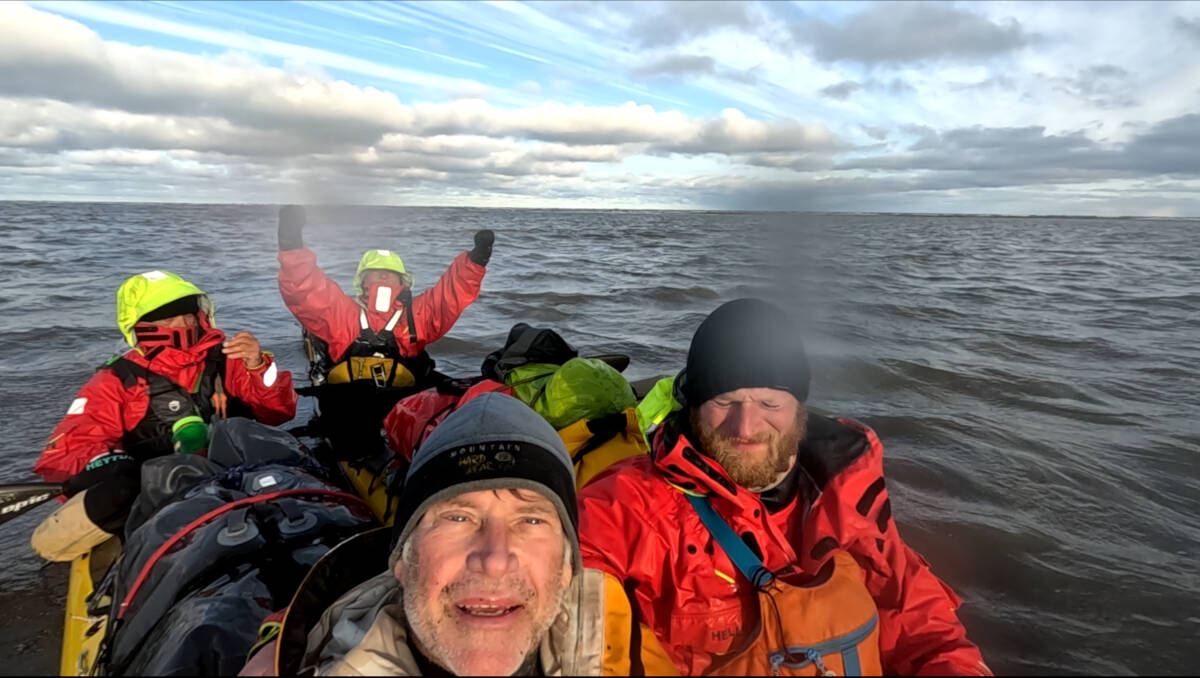
“It wasn’t relevant at all until the last two minutes, where suddenly we’re in breaking waves for the first time. If I had not spend those four days with that guy, I definitely would have flipped and possibly died. That was all of my training and it was entirely relevant for keeping me alive but only for 30 seconds.”
Fortunately, they were able to navigate the heavy waves and reach the end of the passage, though even then they still have several hundred kilometres to go before they could consider themselves safe.
But still, once the realization he had actually accomplished the journey hit him, Agnew said he was overwhelmed.
”We just crossed the line and I just burst into tears and cried and cried and cried and cried,” he said. “That was just a moment where I’m so proud of myself and so content and so happy to have done it with these people as well.”
Moments of pure magic
For all the near-death experiences and hair raising adventures, being alone in Canada’s most remote waterways provided opportunities for truly unique experiences.
Hansen recalled witnessing both the full moon and sun across one another early in his journey. A personal highlight for Hansen was reaching Fort Ross, an abandoned Hudson’s Bay Company trading post used by Henry Larsen in his 1942 traversal of the passage from East to West by way of ship.
”It’s such a historic place, but also there was a gas stove there and some food and notes from other travellers,” he said. “We got to sleep in these beds and cook and so that was a nice break. That’s where we saw our first cruise ship and we talked to them on the VHF radio — that was a blast.”
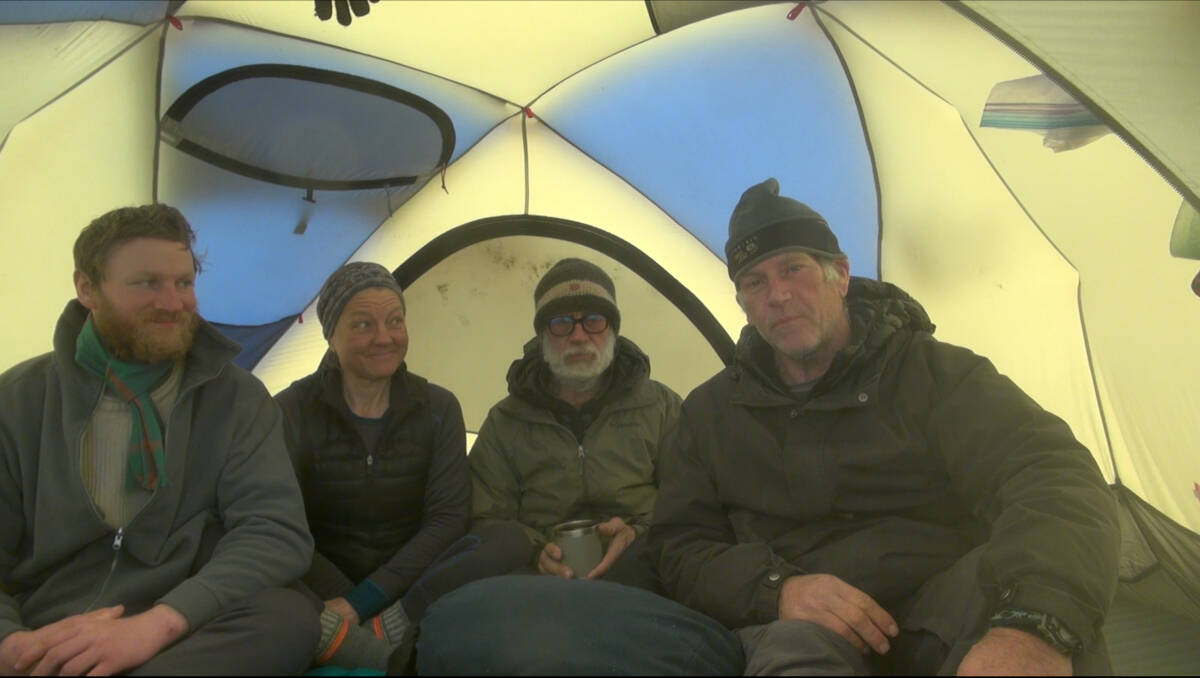
While navigating the ice floes and channels, the team found themselves visited by muskox, right whales and even paddled among narwhals.
Another pleasant surprise for the team was the volume of driftwood in the passage. Hansen said that in spite of no trees in any direction, the team was able to have frequent campfires to warm up from nature’s bounty.
Both Hansen and Agnew encouraged anyone crazy enough to take on an adventure like this to do so, but Hansen noted he did a lot of homework before even getting started.
Even with reading every piece of literature on the passage he could find and phoning down experts in every field, Hansen pointed out the team had to abandon their attempt last summer.
“So the advice I would give is look at what others have done and look at what we have done to be successful,” he said.
He added good credit is also important — while a lot of adventurers come from high income backgrounds, Hansen is a social worker and carpenter. Although they were able to raise $10,000 through crowdsourcing, each member paid for most of their own expenses. Hansen noted his next “adventure” will be paying down the credit card debt he accumulated financing the journey.
Agnew noted that even if the team had needed to stop because of safety reasons, the journey itself was the reward.
”My advice to anybody taking any adventure is the outcome is only part of it,” he said. “The outcome is binary. You either do what you do or you don’t. What if we finished 100 miles short — is that a failure? What you’re accomplishing isn’t solely that line in the map.
“I had narwhals right next to me. I saw bears before sunset, I saw sunrises, I pushed myself. I made best friends.
“Who’s to tell me that’s failure?”
